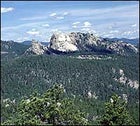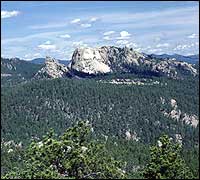Once, centuries ago, Hawaii was a land of superstition, kapus (taboos), animist spirits, and gloriously occult vengeance. When Captain James Cook made the mistake in 1779 of landing on the Big Island from a counterclockwise direction—after previously having sailed, more auspiciously, clockwise—he became embroiled in a dispute with angry, frightened locals and wound up hacked to death. The murder site remained “haunted” for years.

The islands obviously are a very different place today. There are more Baptists than animists. And you can sail into Kealakekua Bay, where Cook met his end, from any direction without undesirable consequences. But Hawaii remains rich with mysterious sites and rituals to which outsiders are not invited. Kahunas talk to rocks; the rocks, they say, talk back. Sharks embody the spirits of long-dead but still fractious relatives. And ancestral ghosts are prayed to, in hopes they’ll halt construction projects, especially golf courses.
The truly adventurous visitor will want to experience at least a little of this, to know “chicken skin” (the local argot for “goose bumps”). Among the islands’ finest spooky spots: the Bishop Museum in Honolulu, home of a major collection of fishhooks made from dead warriors’ bones; Kaena Point on Oahu, where sleeping folks’ souls are thought to wander, sometimes into endless night; and the big, modern, incomplete H-3 Highway from Kaneohe Marine Corps Air Station to Pearl Harbor. The most expensive road construction project in Hawaiian history, the H-3 has been bedeviled by mishaps, including a recent instance in which a backhoe supposedly levitated before a crowd of terrified witnesses. The puckish culprit, many Hawaiians believe: angry ancestral spirits who disapprove of such desecration of the land. A tip: Approach the H-3 reverently. And approach it from the left.


